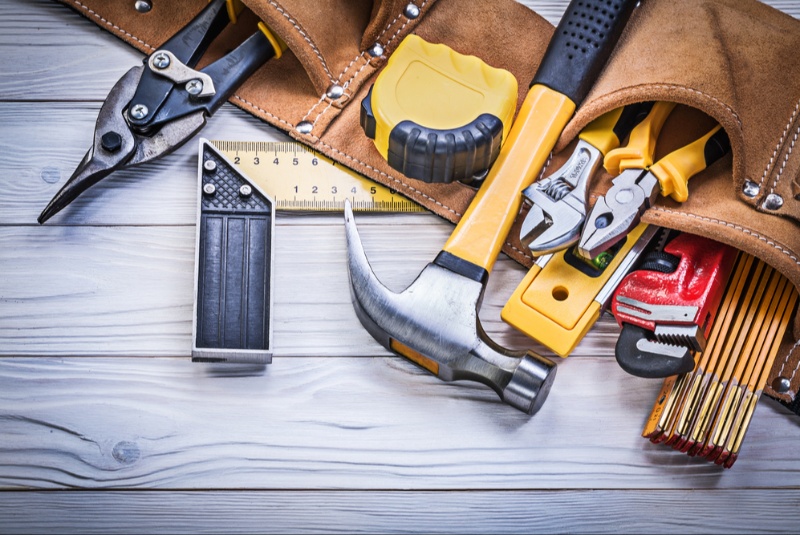Embarking on home DIY projects can be a rewarding way to improve your living space, learn new skills, and save money. However, the success of these projects heavily relies on having the right tools at your disposal. This guide aims to help you navigate the vast world of DIY tools, ensuring you're well-equipped for any task at hand.
Assess Your DIY Project Needs
Before diving into the plethora of tools available, clearly define the scope of your DIY projects. Are you planning on doing light repairs and maintenance, or are you considering more ambitious renovations? Different projects require different tools, so having a clear understanding of your goals can help streamline your tool selection process. Consider creating a list of planned projects to identify common tasks and the tools that are frequently needed.
Start with the Basics
Every DIY enthusiast needs a core set of tools to handle common home repairs and simple projects. These essential tools include:
- Hammer: A versatile tool for driving nails, fitting parts, and breaking objects apart.
- Screwdrivers: A set with various sizes and types (Phillips and flat-head) to tighten or loosen screws.
- Adjustable Wrench: Useful for turning nuts and bolts of different sizes.
- Tape Measure: Essential for accurate measuring to ensure cuts and alignments are precise.
- Utility Knife: Handy for cutting through various materials with precision.
- Pliers: Useful for gripping, twisting, and cutting wires.
- Level: Ensures your projects are perfectly horizontal or vertical.
- Drill: A power drill, preferably with a set of drill bits, is invaluable for making holes and driving screws efficiently.
Starting with these basics, you can tackle a wide range of simple DIY tasks and repairs around the house.
Consider Tool Quality and Budget
When selecting tools, it's important to balance quality and budget. While high-quality tools can be more expensive, they often offer better performance and longer durability, making them a wise investment in the long run. Research brands with strong reputations for quality and reliability in the DIY community. However, if you're on a tight budget or planning to use a tool infrequently, there are reputable brands that offer good quality at more affordable prices. Always read reviews and compare products to ensure you're getting the best value for your money.
Power Tools vs. Hand Tools
Depending on the nature of your DIY projects, you'll need to decide between power tools and hand tools. Power tools, such as drills, saws, and sanders, save time and effort on labor-intensive tasks. They're ideal for large projects or tasks requiring precision and power. Hand tools, on the other hand, offer more control and are often sufficient for smaller, less demanding jobs. For those just starting their DIY journey, gradually building up a collection of both power and hand tools as needed is a practical approach.

Safety Equipment
Safety should be your top priority when undertaking DIY projects. Investing in proper safety equipment can prevent injuries and ensure you can work confidently. Essential safety gear includes safety glasses, ear protection, gloves, and a dust mask or respirator for projects that generate dust or fumes. Don't overlook the importance of safety equipment; it's as crucial as the tools themselves.
Storage and Organization
Keeping your tools organized and properly stored not only protects your investment but also makes your DIY projects more efficient. Consider toolboxes, pegboards, or storage cabinets to keep your tools accessible and in good condition. Proper storage solutions can also help you quickly identify the tools you need, saving time and frustration during your projects.
Specialty Tools for Advanced Projects
As you gain experience and tackle more complex projects, you may find the need for specialty tools. These can include anything from tile cutters for bathroom renovations to paint sprayers for a professional-quality paint job. Before purchasing specialty tools, consider the cost versus the frequency of use. For tools you'll use infrequently, renting or borrowing may be a more cost-effective option.
Embracing Technology and Innovation in DIY
The DIY world is constantly evolving, with new technologies and innovative tools emerging to make projects easier and more efficient. Smart tools equipped with Bluetooth connectivity for precision measurements, apps that offer interactive project guides, and advanced materials for better performance are just the tip of the iceberg. Investing in these cutting-edge tools can elevate your DIY projects to new levels of sophistication and satisfaction. While staying updated with the latest advancements may require time and investment, the payoff in terms of time saved and the quality of your work can be significant. Embrace the future of DIY by incorporating technology and innovation into your toolkit.
Learning and Growing Your Skills
With the right tools in hand, the next step is to continuously learn and improve your DIY skills. Take advantage of online tutorials, workshops, and community classes to expand your knowledge and confidence in using various tools. Learning proper techniques not only improves the quality of your work but also ensures you use your tools safely and effectively.
Conclusion
Choosing the right tools for your home DIY projects is a critical step towards achieving successful outcomes and enjoying the process along the way. By assessing your needs, starting with the basics, considering quality and budget, and prioritizing safety, you can build a comprehensive toolkit that serves your current and future projects. Remember, the best tools are the ones that fit your specific needs, budget, and skill level, empowering you to turn your home improvement visions into reality.




